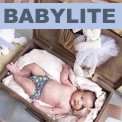The bones of people with osteoporosis become thin and weak. The word “osteo” comes from the Greek osteon meaning “bone”, while “porosis” comes from the Greek poros meaning “hole, passage”. According to Medilexicon’s medical dictionary, osteoporosis is a “reduction in the quantity of bone or atrophy of skeletal tissue; an age-related disorder characterized by decreased bone mass and loss of normal skeletal microarchitecture, leading to increased susceptibility to fractures.”
About 3 million people have osteoporosis in the UK, causing approximately 230,000 fractures each year, according to the National Health Service (NHS). Osteoporosis is a public health threat for an estimated 44 million people in the USA, 55% of people aged 50 or over, says the National Osteoporosis Foundation (NOF). The NOF says that 10 million people currently have osteoporosis, while 34 million are thought to have low bone mass; which places them at significantly increased risk for the condition.
As people are living longer and leading more sedentary lives, the incidence of osteoporosis is expected to continue rising. This study reports that policy makers and funding agencies do not always consider this development sufficiently in their planning.
If osteoporosis is not prevented, or if it is left untreated, it can progress without causing any pain until a bone breaks – most likely the hip bone, a bone in the spine, or the wrist. A hip fracture invariably requires hospitalization and major surgery. Hip fractures generally lead to serious walking disability and sometimes death if left untreated. Fractures of the spine or vertebrae can sometimes result in loss of height, severe back pain, and deformity.
What are the symptoms of osteoporosis?
Osteoporosis develops very slowly over a period of many years. The condition may creep up on the patient without any obvious symptoms initially – it can take several months, and even several years to become noticeable. Early signs of osteoporosis may include:
* Joint pains
* Difficulty standing
* Difficulty sitting up straight. The stooping position often seen among elderly people is a visible sign of possible osteoporosis.
As the person’s bone density or bone mass continues to go down fractures of the hip, wrist or bones in the spine become more common. Even a cough or a sneeze may fracture a rib or cause partial collapse of one of the spinal bones.
Elderly people suffer greatly if they fracture a bone, because the bone cannot repair itself properly. Bones that do not effectively repair themselves are more likely to trigger arthritis, eventually leaving the patient seriously disabled. A large percentage of elderly patients who break a bone are not able to live independently afterwards.
Although osteoporosis is not painful in itself, the condition causes bones to break more easily, and broken bones are very painful. The most common cause of chronic pain linked to osteoporosis is a spinal fracture.
I can test the body for osteoporosis using kinesiology and recommend a natural diet and tissue salts to help support the bones health.







